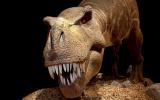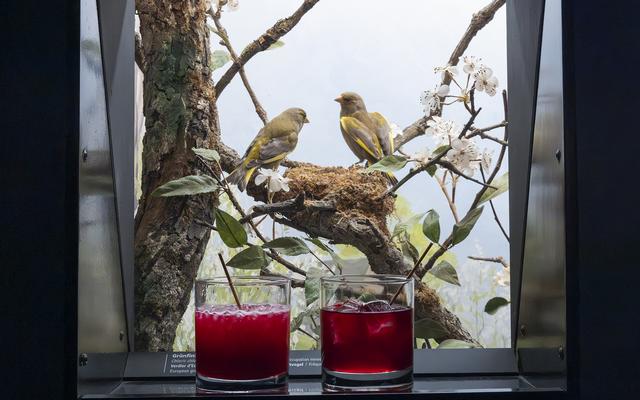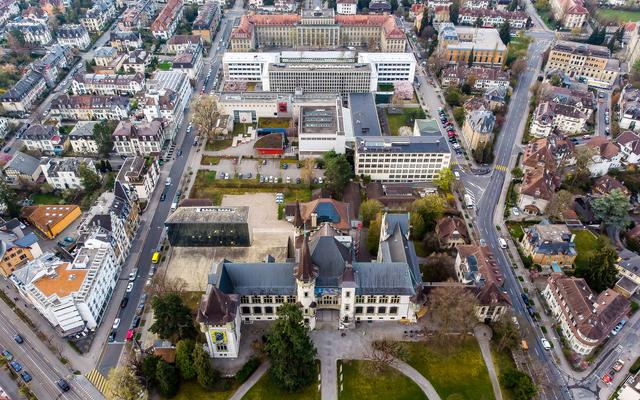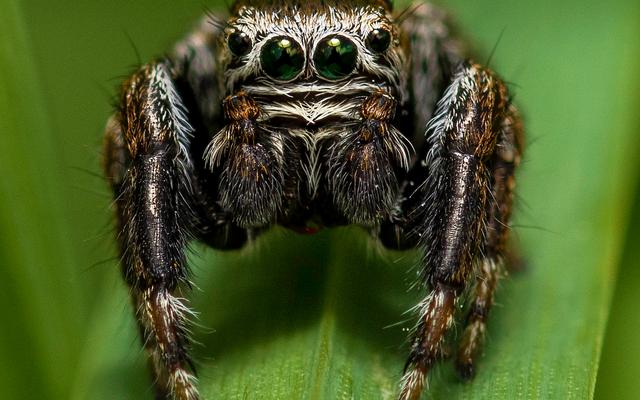No, from a meteorological perspective, 2018 was not a good year for museums. However, even though the unusually good weather did museums no favours, the Natural History Museum of Bern (NMBE) achieved an excellent result. By welcoming 129,753 visitors, the institution owned by the municipality of Bern exceeded the magic limit of 100,000 visitors for the eighth year in a row. The annual result was also the second best ever in the 180-year history of Bern’s oldest museum. The breakdown of admissions was as follows: paying visitors to exhibitions totalled 94,539 and there were 35,214 visitors to events (e.g. Museums Night). Compared with the previous year, this represents an increase of 4.5% (2018: 124,106).
It was not only the financial result that was outstanding; the museum also received several awards. In autumn, it won the coveted ‘Edi’, the highest award in the advertising film industry, for its original annual report. As the ‘highlight and surprise of the evening’ (Werbewochemagazine), the NMBE received one of the seven gold prizes for its film ‘Büsu 4’. The NMBE is also one of Switzerland’s 10 best event and party spaces. The Swiss Location Awards’ expert jury ranked the museum among the best in the Event & Party Spaces category.
The highlights of the last year
The highlight of last year was the opening of Pica’s Nest, the forest experience for the whole family, which opened in November. The NMBE is very much a family museum. It offers a wide range of events and experiences that children and families can explore on their own. The museum has now extended the range of activities it offers its core customers by adding a sanctuary for the whole family. Pica’s Nest is an innovative new museum concept – a children’s exhibition and pleasant recreational space, all in one. It is perfect for discovering, playing, reading, drinking coffee and relaxing. Children can learn all about the forest habitat in a playful and relaxed way.
The museum also opened two smaller, but no less impressive exhibitions; in particular, the ‘Five stars’ special exhibition, in which we show 170-million-year-old fossils of echinoderms from the Swiss Jura – a unique fossil collection. The highlight of the exhibition is a rock slab containing sea urchins, starfish, brittle stars, crinoids and sea cucumbers. The exhibition will remain open until September 2019.
In the ‘Jewels from the cellar’ special exhibition, we presented treasures from our collection, which contains 6.5 million objects. Collections lie at the heart of a natural history museum and form an archive of nature.
Other highlights last year were our events, with well-known personalities honouring the museum with visits – Müslüm, Peter Schneider, Mark Benecke and Lukas Bärfuss, for example. The museum remains consistent to its plan to use unconventional events to bring new visitors to the museum and rethink its purpose as an institution. To that end, meditation classes were held in the new Apocalypse exhibition, a four-course vegan meal was served in the skeleton gallery as part of the popular ‘Through the courses’ gastronomy series, and high-quality classical music performed as part of the ‘Musik im Rausch’ concert series.
Outlook for the next year – ‘T. rex’ is coming to Bern
Next year, the big event will have short arms and a strong bite: on 14 September, the special exhibition ‘T. rex – do we know each other?’ will open (until 16 February 2020). The spectacular, life-like dinosaur reproductions will be on display in Switzerland for the first time. The exhibition, which originates from London’s Natural History Museum, sheds light on the most famous of all the dinosaurs. T. rex had powerful jaws that would have been able to crush a car, and a mouth that could have swallowed a person whole. Even so, new scientific findings have raised the question of whether Hollywood’s favourite reptile was actually quite as brutal as we have always believed. From mid-September, Swiss dinosaur fans will have the opportunity to consider the scientific findings for themselves, as well as see the world’s first life-like reproduction of a T. rex, brought to life using animatronics. In addition to several other dinosaur figures, some of which also move, a life-size skeleton will amaze visitors of all ages.
There will also be plenty going on at the museum in the first half of the year. A varied programme of events awaits visitors; for example, as part of the ‘Apocalypse’ exhibition, magician Lionel Dellberg will meet scientist Christian Kropf.
Our museum is also a research institution
The dwarf fish of the genus Paedocypris, from the large carp family, is one of the smallest fish in the world. With a length of less than 8 mm, it appears larvae-like rather than a fully-grown fish. Several bones are missing from its skeleton. For the first time, an international research team, including Dr Lukas Rüber from the NMBE, is investigating the genomes of some types of these mini-vertebrates. Surprisingly, even the genomes of these tiny creatures are greatly simplified; since many of the genes for development of the skeleton, muscles and nerves are missing, they are among the smallest known vertebrate genomes. These findings allow us a better understanding of the evolution of genomes and miniaturisation in vertebrates.
This last year, the urgently required restoration of the Steinmann-Eawag collection has been in full swing. This collection of Swiss fish, collected between 1872 and 1952, is of great historical value and came to the NMBE in November 2017. Many of the approximately 1,000 collection jars had to be replaced. The preservation fluid was replaced and damage to the fish repaired. This collection will be one of the main focuses of the planned public collection.
The research carried out by the NMBE’s vertebrates department is targeted and networked at a global level. Evidence of this from the last year are publications with colleagues from China, Germany, the UK, Indonesia, Iran, Israel, Malaysia, Mexico, Norway, Sweden, Singapore, Spain and the US. In addition to the long-established biodiversity research in south-east Asia, this year a cooperation agreement was also signed with the National University of Mongolia. In June, during an expedition to the central and north-eastern areas of the country, Dr Manuel Schweizer, curator for ornithology, collected specimens of sand martins for his ongoing doctoral thesis. Further research trips there are planned.
During excavations carried out by the canton of Bern’s Archaeological Service, many animal bones were found on the site of a Roman river landing at Studen/Petinesca-Wydenpark. Some came from the embankment of the river Aare and were investigated in 2018 by our archaeozoologist André Rehazek. In addition to many individual bone fragments, 2,000-year-old and relatively complete skeletons of dogs and beavers were also found and painstakingly pieced together. After they died, these animals were disposed of as waste and buried in the ground as part of the Roman embankment on the Aare. The varying size and growth form of the dogs indicates that different breeds or types of dogs existed – in this case, possibly farm and hunting dogs. The beavers, on the other hand, were hunted for their fur in the riparian forests along the Aare.
Unfortunately, this project will be the last collaboration with the Archaeological Service. As a result of cost-saving measures on its part, the joint performance agreement, which ran until the end of 2018, has not been extended. This means that the well-established archaeozoological research at the NMBE cannot be continued.
Due to the intensive work carried out on the collections and the associated creation of identification guides for scientific and conservation-related questions, in 2018 ‘only’ two new species were discovered and documented – a chalcid wasp from central Europe and a land snail from Panama. Together with Fabian Klimmek, Hannes Baur developed an interactive identification key for the chalcid wasp of the genus Pteromalusfor central Europe. Two further publications dealt with the snail fauna of the West Bank and Tunisia. One printed work addresses the issue of the differentiation of species, genus and sub-family in the most species-rich spider family, that of jumping spiders.
Curator Dr Eike Neubert is leading a project to record Swiss freshwater mussels. Working together with mussel specialist Dr Arno Schwarzer, the aim is to record mussel stocks across Switzerland. Recently, a previously unknown species in Switzerland was detected: the native species of mussels are suffering as a result of invasive newcomers. An up-to-date inventory of this sensitive group of animals is therefore urgently required, hence the support of this project by the Swiss Federal Office for the Environment.
In 2018, the search for Twannberg meteorites continued. The discovery rate fell slightly, indicating that the area has already been heavily searched. In 2018, there were 157 finds, totalling 7.1 kg (2017: 196 meteorites, 22.1 kg). In addition to the proportion of meteorites that collectors submit for documentation and finds made by the NMBE itself, purchases are also made specifically to expand the collection of Twannberg meteorites.
Last year, three new meteorites (the Mont Sujet, Mürtschenstock and Chasseron meteorites) were discovered – as reported by the media. The NMBE played a role in all the finds. This raised the number of finds of Swiss meteorites last year to 11.
One special feature of the NMBE is its palaeontology department. Our palaeontologists are recognised experts when it comes to dating rock strata on the basis of ammonites. Our scientists are examining samples for Nagra (National Cooperative for the Disposal of Radioactive Waste) from the area around the Randen mountains and samples from the Mont Terri laboratory for swisstopo (the Swiss Federal Office for Topography). In the last year, we were able to significantly increase our fossil collection, thanks to the donation of 40,000 fossils from the Fondation paléontologique jurassienne. Work carried out on the new collection has already yielded results – Eva Bischof documented a new species of cidaroid (Diplocidaris bernasconii), named after Gino Bernasconi, the geoscientific technician at the NMBE and finder of the fossil. A work was also published containing investigations into fossilised snails in coral reefs in the St-Ursanne Formation (Upper Jura) of the Swiss Jura.
Thanks to the scientific work of the Bern Entomological Association (EVB), the NMBE has ongoing documentation of Swiss butterfly and beetle fauna at its disposal – more than 150 years of records of high scientific value. We received a valuable collection of small butterflies, mainly from Switzerland, as a bequest from the estate of EVB member Peter Sonderegger (Brügg, BE). We received a collection of butterflies, moths and spiders from the Entlebuch UNESCO biosphere reserve and neighbouring areas from Werner Hirschi (Langnau, BE). Max Müller (Ried, FR) donated a butterfly collection from the 1960s and 1970s from the Democratic Republic of Congo (formerly Zaire). Dr Werner Marggi (Thun, BE) gave us 3,000 valuable Palaearctic ground beetles. In 2018, almost 39,000 collection specimens were recorded in the database.




